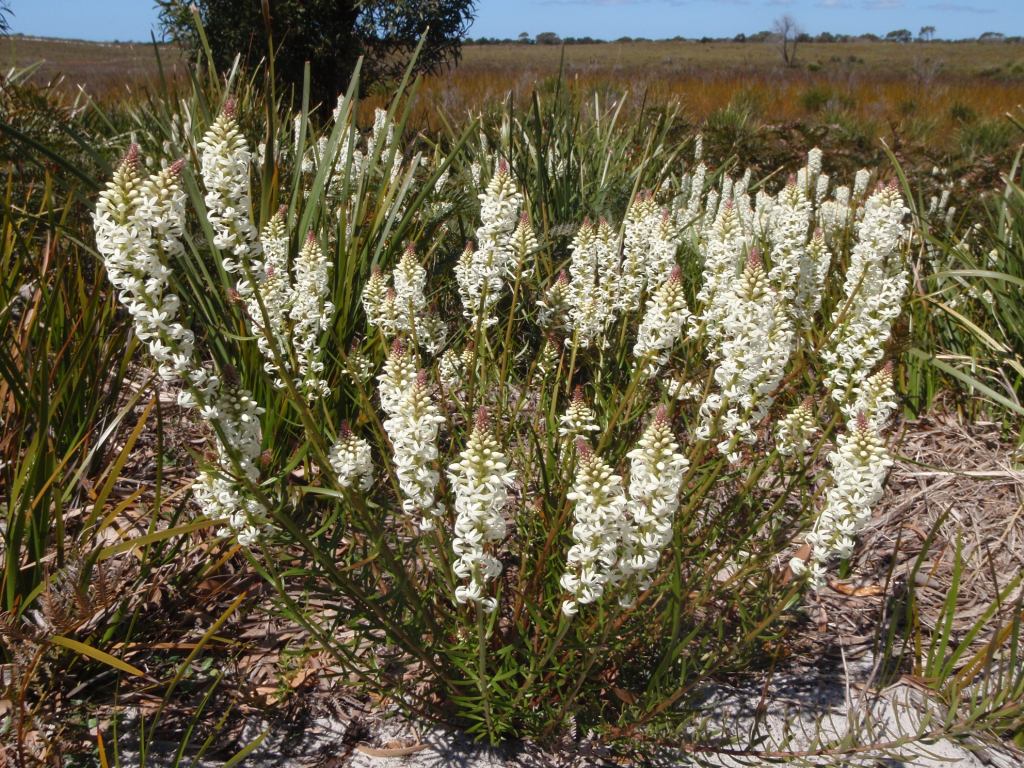Scientific Name: Stackhousia monogyna
Common Name: forest candles
Family Classification (Clade): Eudicots
Family: Celastraceae
Form Description: Herb, usually branched from the base.
Height (m): 0.3 – 0.8
Flowers: White flower spike.
Fruit: Nutlet
Municipality
Plant Communities
Habitat Notes
Widespread and extending well into the mountains. Found on shady cliff edges. Often prominent after fires. Flowering in spring in the lowlands through to early autumn in the highlands. Coastal forms probably frost tender.
Site Tolerance
Dry, Moist, Rocky, Shady
Soil Tolerance
Fertile, Loam, Nutrient-poor, Sandy, Well-drained
Frost Tolerance
Hardy
General Notes
Attracts butterflies.
Propagation Calendar
-
Flowering Month
Jan Feb Mar Apr May Jun Jul Aug Sep Oct Nov Dec -
Seed Collecting Month
Jan Feb Mar Apr May Jun Jul Aug Sep Oct Nov Dec -
Sowing Month
Jan Feb Mar Apr May Jun Jul Aug Sep Oct Nov Dec -
Cutting Month
Jan Feb Mar Apr May Jun Jul Aug Sep Oct Nov Dec
Propagation Method
Seed Information
Seed Collection
Can be grown from seed. At maturity splits into 2-3 rough surfaced nutlets.
Seed Treatment Method
Standard Scatter seed thinly on to damp potting mix. Hold seed in place by covering with more potting mix to approximately the depth of the seed size.
Seed Treatment Notes
Seed lasts for several years but best treated as short lived. One member’s experience: seeds put on folded toilet paper which was then lit so that it smouldered produced good germination, possibly due to heat or smoke, while untreated seeds slow to germinate.
Cutting & Division Information
Can be propagated from cuttings.

